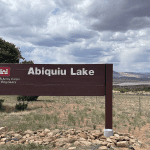- Heavy Pacific storms drench Northern California.
- Drought intensifies in Arizona and southern Nevada.
- California reservoirs above average; Southwest reservoirs low.
- Snowpack levels improve but drought persists in the Southwest.
November 29, 2024 — A series of powerful Pacific storms have brought much-needed rain and snow to Northern California, but the Desert Southwest continues to grapple with worsening drought conditions, according to the latest report from the National Drought Monitor issued on November 26, 2024 .
.
California’s Rainy Relief.
In a dramatic turn of events, Northern California was soaked by a succession of storms that delivered significant rainfall and heavy mountain snow. An observing station northwest of Santa Rosa reported an astonishing seven-day total of 24 inches of rain. These storms led to “widespread removal of areas of drought on the map across the Pacific Northwest as well as areas experiencing short-term dryness across Northern California,” the report stated .
.
The deluge alleviated drought conditions and boosted the state’s reservoir levels. California’s two largest reservoirs, Lake Shasta and Lake Oroville, are now at 111% and 105% of their historical averages for this date, respectively. This is a significant improvement, considering the persistent drought conditions that have plagued the state recently.
Moreover, mountain snowpacks in the northern and central Sierra have been replenished, with the Natural Resources Conservation Service’s SNOTEL network reporting snow water equivalent (SWE) levels above normal. The Lower Colorado region, which includes parts of California, recorded SWE levels at 127% of normal as of November 25.
Southwest Drought Worsens.
While California celebrates its rainfall windfall, the situation is starkly different in the Desert Southwest. Areas of extreme drought have expanded in northwestern Arizona and extended into southern Nevada. The report noted that this intensification is “in response to a combination of short and long-term precipitation deficits and record heat observed during the past six-month period. ”
noted that this intensification is “in response to a combination of short and long-term precipitation deficits and record heat observed during the past six-month period. ”
In Arizona, reservoir levels paint a concerning picture. The Salt River Project reports that the Salt River system reservoirs are 75% full, and the Verde River system is at 57% capacity. This brings the total reservoir system to 73% full, down from 81% at the same time last year.
Similarly, the Southwest’s major water sources are alarmingly low. Lake Powell is currently 37% full, only 59% of its typical storage level for this date. Lake Mead fares even worse at 32% full, just 53% of average. The total Lower Colorado system stands at 42% full, a slight decrease from 43% a year ago.
New Mexico’s largest reservoir along the Rio Grande is a mere 7% full, just 17% of its average capacity. These low reservoir levels underscore the severity of the drought in the region.
Snowpack and Future Outlook.
Snowpack levels in parts of the West have shown improvement, which is a positive sign for future water supplies. The Upper Colorado region, which affects Colorado and parts of Wyoming, has SWE levels at 96% of normal. The Great Basin, including Utah, reports SWE levels at 125% of normal.
Looking ahead, the National Weather Service’s Weather Prediction Center forecasts light to moderate precipitation over the next seven days in the Intermountain West, including the Colorado Rockies and central and southern Utah. However, the Climate Prediction Center’s six to ten-day outlook indicates a moderate to high probability of above-normal temperatures across the West and below-normal precipitation across much of the region.
Complicating matters further is the potential emergence of La Niña conditions. According to the Climate Prediction Center’s ENSO Diagnostic Discussion issued on November 14, there is a 57% chance that La Niña will develop in the October-December period and persist through January-March 2025. La Niña conditions can lead to drier winters in the Southwest, potentially exacerbating the drought.
Communities Brace for Challenges.
The expanding drought in the Southwest raises concerns among farmers, ranchers, and water managers. Reduced water availability could impact agricultural production and increase the risk of wildfires. “Persistent dry conditions and record warm temperatures during the past six-month period have intensified the drought,” the report emphasized.
In contrast, the recent storms in California offer a glimmer of hope. Improved reservoir levels and snowpacks could provide some buffer against future dry spells. However, experts caution that a few storms cannot erase years of drought. Continued water conservation efforts and efficient water management remain critical.
A Tale of Extremes.
The West is experiencing a tale of two extremes: while Northern California basks in the relief brought by heavy rains and snow, the Desert Southwest faces an intensifying drought with dwindling water resources. The coming months will be crucial in determining how these states navigate the challenges these contrasting weather patterns pose.
~~~
Image:





Leave a Reply